Obsolete Arms and Ammo
By Bob Shell
Video by Ammosmith Reloading
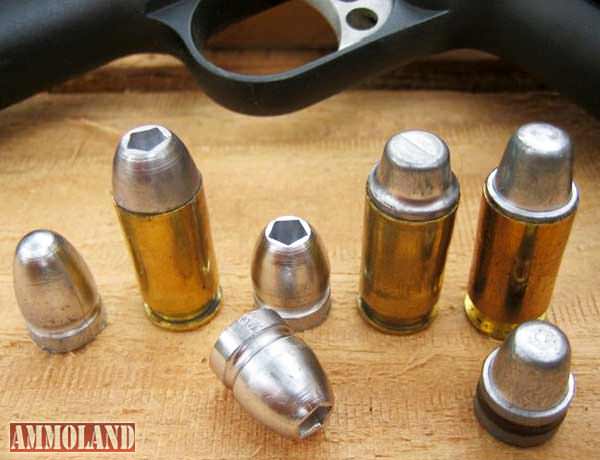
Apache Junction, AZ -(Ammoland.com)- Bullet casting is for someone who has mastered all of the basic techniques of loading ammunition and wants to advance their knowledge and experience.
Casting is one of the two major ways to make your own bullets. The other is swaging and that requires different tools and methods.
Like any other aspect of reloading attention to detail is important. Casting is safe if done correctly but carelessness can cause a serious injury.
Bullet Casting
Casting is essentially melting lead or a lead mixture and pouring it in a mold through the bottom of the pot.
To achieve this you need a source of heat and a mold. The tools need for casting is a pot preferably an electric as it is easier to regulate but a cast iron type on a stove will work. Next are the bullet molds you intend to use and a bullet sizing die. Some lube and odds & ends and you have a basic set up.
Bullet Casting Equipment
There are several companies that offer all of the bullet casting equipment you need. One company that offers a complete line of molding equipment is Lee. I have some of their products and am generally satisfied with them. ( For more info you can go to https://leeprecision.com/bullet-casting/ )
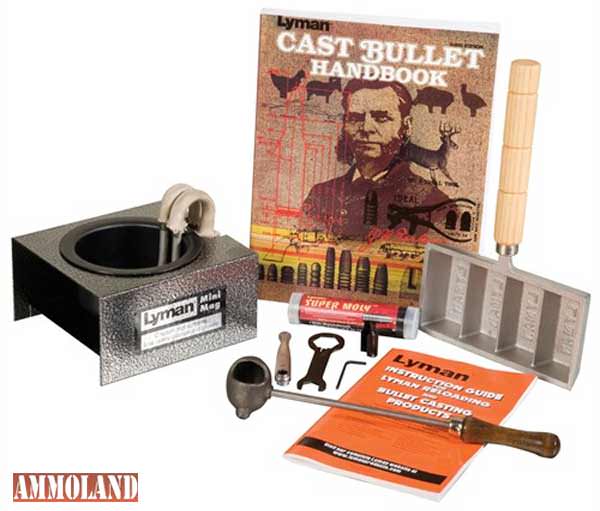
A company who has been around for many years and produces everything necessary for reloading and bullet casting is Lyman. For the beginner they have a master caster kit for info you can go to ( https://www.lymanproducts.com/lyman/bullet-casting/ ) Lyman also produces a book on bullet casting, the Lyman Cast Bullet Handbook, and anyone would do well to purchase a copy. There is a lot of good info in it as well as suggested loads.
Another company that produces the equipment for molding bullets and reloading is RCBS. For more info go to ( https://www.huntingtons.com/store/home.php?cat=871 )
There are many other companies that produce molds and some are custom jobs and the price will reflect that. Like all other facets of reloading there is a vast supply of equipment and supplies and we never have had it so good.
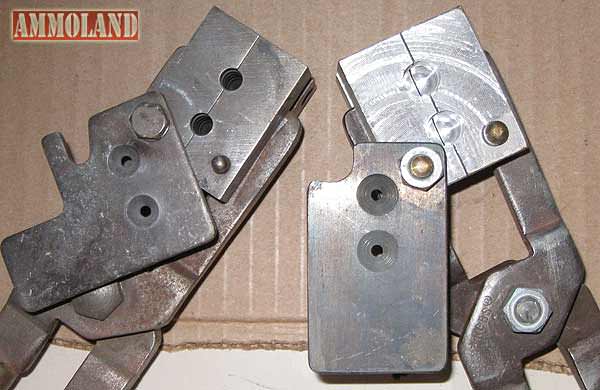
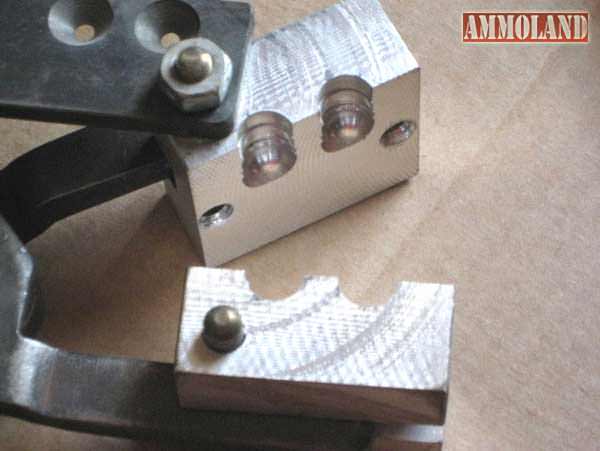

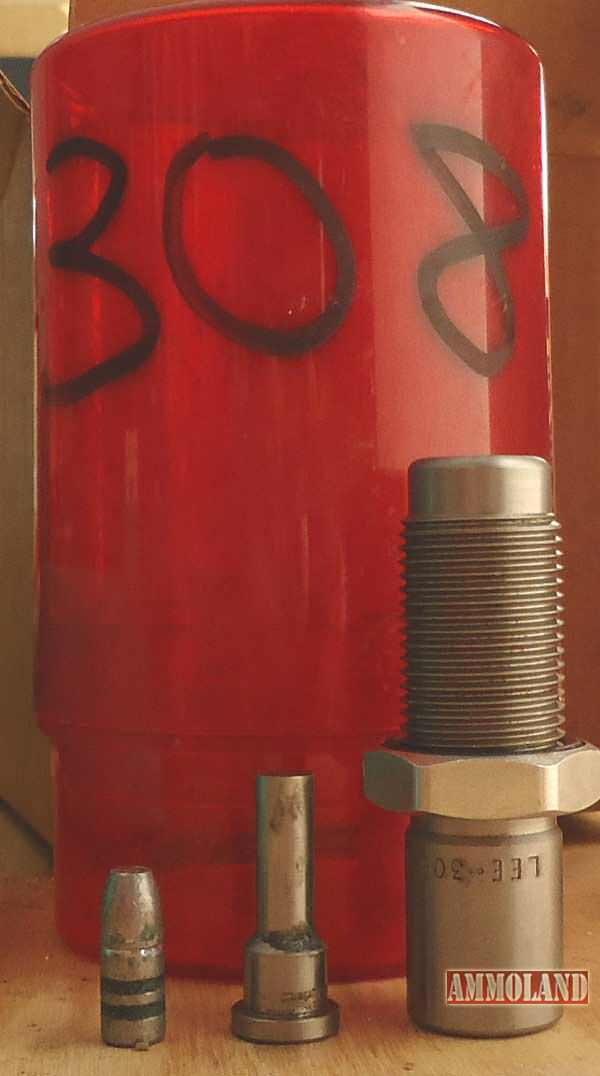
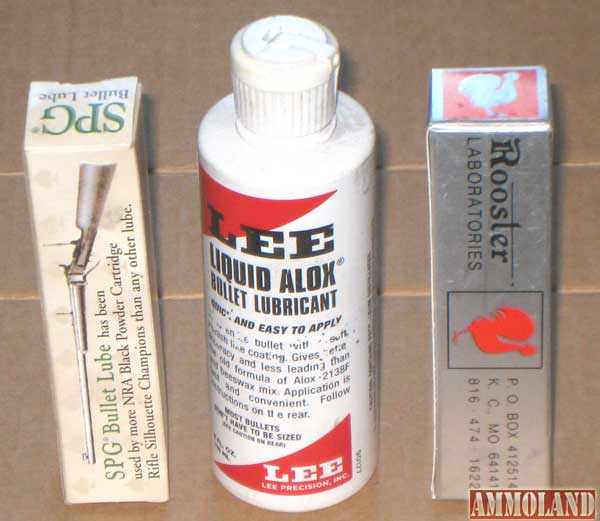
Casting Bullets Safely
When you cast be sure to have good ventilation to avoid possible lead poisoning. You should also have safety goggles and gloves in case of a splatter. As for metal there are various types depending on what type of bullets you are casting. Pure lead is desirable for muzzle loading projectiles both for accuracy and ease of seating. For most knock about bullets at moderate velocities, wheel weights are fine. If you happen to know someone who owns a tire shop so much the better. They are messy to work with as you have to melt off the clips and flux it but if the price is right who cares. You can harden it with a little tin which can be bought from various suppliers but it might not be cheap or necessary.
When I was younger, I use to dig bullets out of the dirt backstop and use them. I washed them with a hose to get as much of the dirt as possible before melting it down. If you do this, be absolutely sure there is no water left or you will risk an explosion. I would spread out the bullets and let dry for a few days prior to melting. Any water dropped into a lead pot of melted lead will result in a shower of hot mix going all over the place including you. It could also start a fire so be sure there is no liquid near the pot.
You can also buy alloyed metal from various suppliers but again it’s expensive and for general plinking it’s not necessary.
Bullet Casting
When I cast bullets, I use at least three different molds and rotate them to avoid overheating. Badly overheated molds will produce a frost on the bullets and the bases might look odd especially if you don’t let them cool enough before knocking off the sprue. When you drop the cast bullets out of the mold have a cloth to catch them to avoid dents, as they are a bit soft until they cool completely. You can drop them directly into water from the mold and that will harden them to an extent if that’s important to you.
Bullet casting might be better then swaging for the beginner as you can start fairly cheaply. You should read up on it and take all the safety precautions I have outlined. Lyman among others produces an excellent book on casting that you would do well to read. You are working with metal that is at least 600 degrees so keep that in mind. Bullet casting is very safe if you follow the proper procedures and take your time. Safety glasses and gloves are two things to wear when casting to help avoid burns. A long sleeve shirt can save you some pain if the lead splatters a little. You can buy a small pot, mold, sizing die and lube for a few dollars if you shop around.
Let’s say you are making cast bullets for a 38 special. For most uses a cast bullet is fine and when done properly is very accurate. If you can get wheel weights or something similar then the cost will go down. With the price of components going through the roof casting is a viable option for any shooter. You also get the satisfaction of making your own bullets and seeing them perform.
As you progress you will pick up more molds and sophisticated equipment though you don’t need some of the stuff right away. You might want to start small to see if you like it and if so you can go from there. Bullet casting low velocity rifle bullets will save you a lot of money and can be used for general target practice. I have also shot some small game with them and they are effective without destroying a lot of meat. Since you use less powder, they are easier on the ears and pocketbook as powder cost more than the best steak Lb. for Lb. In addition, since they operate at lower pressures you can use older cases and it easier on the gun. Since many obsolete guns take odd size bullets casting may be the only way to obtain them.
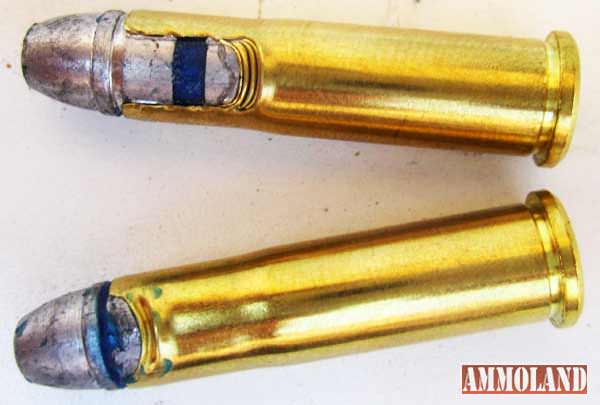
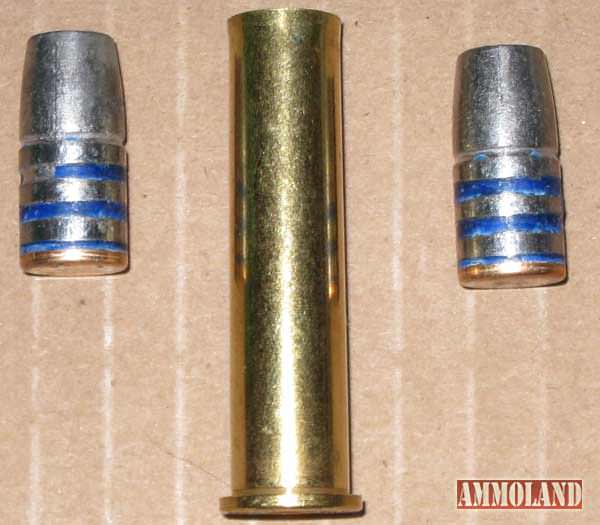
Cast Bullets Larger Cast Bullets
Cast bullets of larger calibers are very effective on large and dangerous game. If anyone doubts that I have a picture of a 1200 Lb. grizzly that was taken down with one shot from a 444 Marlin. The bullet was a 325 grain LBT type that I loaded for this hunter. His buddy also shot a grizzly with a 45-70 loaded with a 400 grain LBT bullet and like the other bear one shot did it. A good friend of mine shot a bison weighing about a ton with one shot from a 45-120 with a 520 grain bullet launched at 1600 fps.
Keep in mind that cast bullets and black powder guns just about killed all the bison by the 1880’s.
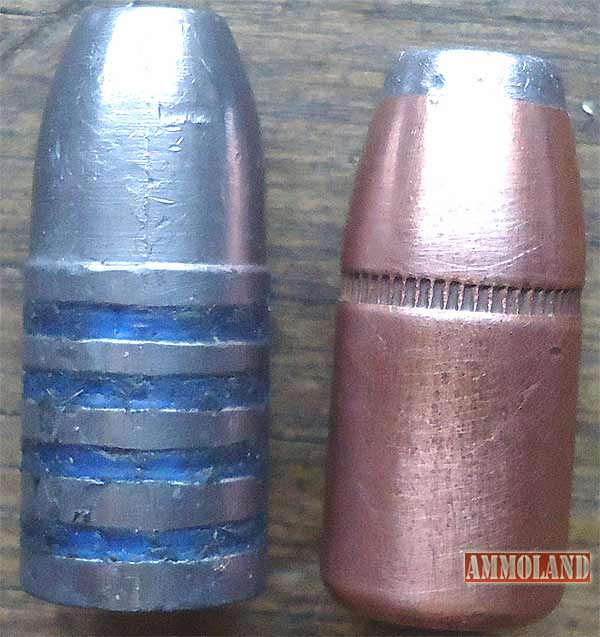

Someone might wonder why large caliber cast bullets are so effective in spite of their pedestrian velocities?
Since they are traveling relatively slow, they don’t upset or come apart as a high velocity bullet might. The more resistance a bullet meets the more likely it will change shape in an animal. The other thing is they are large calibers so they put a big hole into something in spite of little or no expansion and they generally penetrate very deep which enables them to contact and destroy more tissue and organs. They also break bones quite readily. The military guns made from the 1860’s to the 1880’s use large caliber lead bullets and they work quite well. If you are unfortunate enough to step in front of one even today you are in for a world of hurt. They typically run from 40 to 50 caliber, weigh from 3 to 500 grains and are launched from about 12 to 1500 FPS.
Cast Bullets for Small Game & Large Rifles
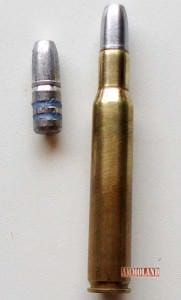
If you hunt large game, why not make cast bullets for light practice and small game. Cast bullets work well on small critters without destroying a lot of meat and you get some extra practice time with your deer rifle. Just be sure it is legal in your area to hunt small game with a rifle. I have shot a good number of small game with them and results are very satisfactory. Since the velocities and pressures are low old cases can be utilized. For example, for the 30-06 I use cases from WW ll and for cast ammo and blanks they are perfect. Why use new brass when the old stuff is still available. I also make it into other calibers such as the 7.7 Jap and the 8 X 57 Mauser instead of using new brass.
There is a lot of options when casting rifle bullets and at this time I am doing a project involving several rifles and Trail Boss powder. When completed I will write a report on my results.
There are some bullets that are made for higher velocities when hunting large and dangerous game. They have a gas check, which is a copper piece that is put on the base of the bullet. If you install a gas check that is usually done when sizing and lubing the bullet. Many molds are set up to install a gas check and both Hornady and Lyman make them in various calibers.
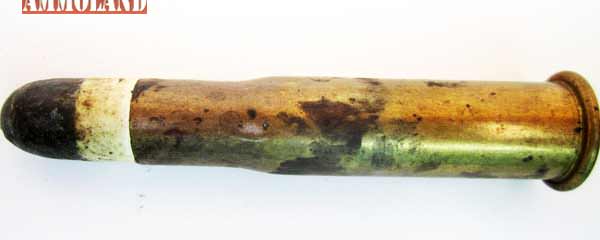
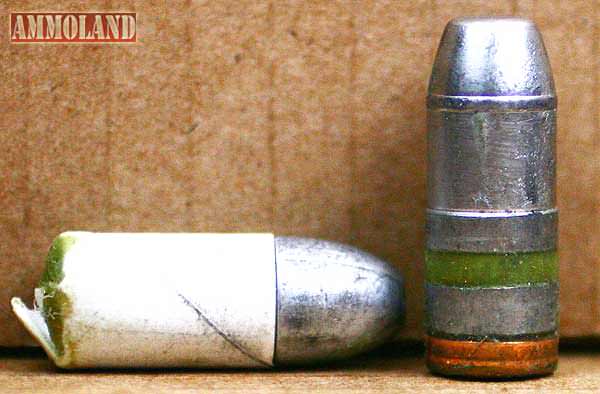

The gas check protects the base of the bullet from the hot gases that burning powder produces. Another method for increasing velocity with cast bullets is to paper patch them. Target shooters use that and some of the old military bullets were paper patched. Paper patching helps prevent leading especially with soft bullets.
Cast Bullets for Cowboy Action Shooting
Cowboy shooters by their rules have to use cast bullets at black powder velocities and I don’t think that they feel handicapped in any way. Since they shoot against a clock, they are loaded light for controllability. A cast bullet can be loaded to lower velocities then a jacketed one. You can load a cast bullet down to 600 fps or even a little less but doing that with a jacketed bullet is dicey at best.
Jacketed bullets that are loaded too low have a chance of sticking in the barrel. There are some military rifle matches that require cast bullets and military guns of the day. I have found that most military rifles such as the 30-40 Krag, 303 British, and the 8 X 57 among others take to cast bullets like a duck to water. For the record I recently completed a test on the new Winchester model 70 in 7 mm-08 and it shot two types of cast bullets quite well. Years ago, I use to shoot matches with a 38 special. I used a 10 cavity Hensley & Gibbs 125 grain SWC mold. With 4.5 grains of 231 I obtained accuracy that will equal any jacketed bullet on the market. For the type of shooting I was doing, it gave a perfect combination between accuracy, velocity, and controllability. I have a 10.4 Italian rifle that was converted to the 6.5 Carcano around WWl. Those conversions are not safe to shoot with full power loads but a 140 grain cast ahead of 5 grains of Red Dot is perfectly safe to shoot in this firearm.
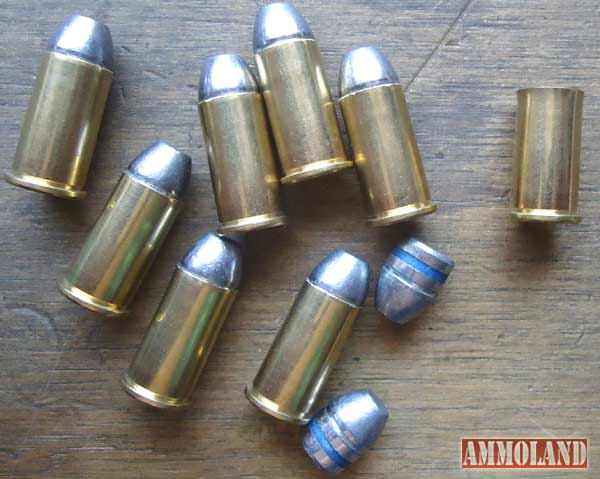
Cast Bullets for Muzzle Loaders
Another use for casting is in muzzle loaders. The process is the same but for best results pure lead should be used. It is easier to push down a barrel especially one that has been shot a few times and is more accurate as it tends to grip the rifling better. Space prohibits me from going into a lot of detail but perhaps at a later date we can go into rifle bullets and muzzloading projectiles.
Bullet casting is a good way to learn more about guns and ammo. If you reload your ammo and cast your bullets, you are way ahead of most people. If you have a good source of casting metal raw material then you can make ammo for almost nothing except your time.
Cast Bullets Resources:
- Bullet Casting Supplies
- Bullet Casting Books
- Bullet Casting Metals
- Cast Bullet History : https://en.wikipedia.org/wiki/Cast_bullet
- Bullet Casting 101 DVD
Ammosmith Reloading‘s Bullet Casting Video Playlist
About Bob Shell:
A Custom Reloader of Obsolete and Antique Ammo, Bob Shell, writes about the subject of Guns, Ammo, Shooting and Related Subjects. Visit: www.bobshellsblog.blogspot.com
About Ammosmith Reloading:
Welcome to Ammosmith.com, we’re reloading, inside and out. Ammosmith represents Ammosmith.com. A website dedicated to the loading of the modern metallic cartridge. It’s more than just a website, it’s a tutorial that starts with the basics and will guide you to the most advanced forms of making your own premium quality ammunition in you own home.

